Koala - A Marsupial Mammal
Koala natively belongs to Australia's natural habitat (Queensland and Victoria). Koala is classified as a marsupial mammal (Mammals whose females have pouch, to shelter their babies). Therefore, it wouldn't be wrong to consider Koalas belonging to the mammal family of the Kangaroos, Wallabies, Tree Kangaroos and Opossum etc. Marsupial mammals are special kind of mammals, that not only feed milk to their young ones, but they also possess a pouch (Females only) as well, in which their young ones lives until they reach a certain level of adulthood. Therefore, the mother koalas specifically feed their young ones (Joeys), and the mother koalas also keep their young ones in their pouches for a certain period of time, until they leave them in the wild.
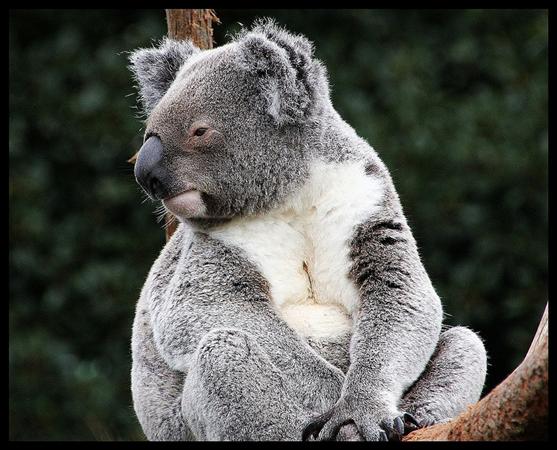
Koalas have been living on earth for more than 30 million years ago and specifically at the Australian continent. Before that about 50 million year ago, they are thought to have migrated from Antarctica to Australia when Australia broke from Antarctica. During this time and until now, Koalas have surely gone through different kinds of transformation and evolutionary periods as well. However, many researchers and observers do suggest that even for this long period, Koalas have relatively remained almost same with a very small kind of variations within their physical attributes. Therefore, a koala of today can be comparatively similar to the koala of 30 million years ago or beyond.
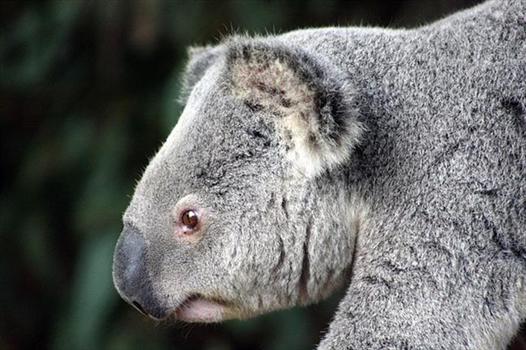
The word Koala itself means No Water. This word is specifically rewarded to the koala from the local inhabitants of Australia, who when observed specifically found that the animal does not drink water at all throughout its life, but rather lives on its another food which is Eucalyptus leaves. Koala was initially not spotted by the early Australian settlers, and almost after 10 years of their settlement, they considered koala as a separate gene thriving across the continent of Australia.
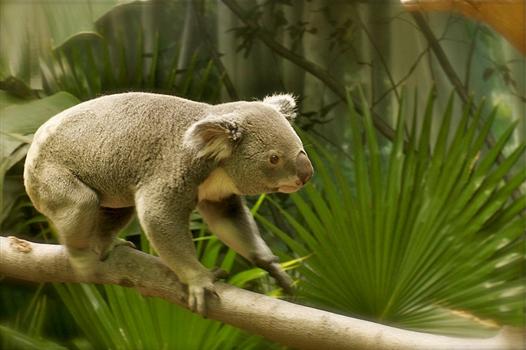
Koalas are generally considered as beautiful and adorable creatures across the continent of Australia. Therefore, because of this reason, Koalas are generally considered as much more popular as compared to the Kangaroos in Australia. However, outside of Australia, the world, considers Kangaroos as a core symbol of Koalas, but within Australia, these are actually Koalas that gain the maximum popularity as animals. It wouldn't be wrong to compare Koalas to be even cuter than the teddy bears because physically it is almost the same as teddy bear, but koalas' facial attributes are much attractive as compared to the teddy bears.
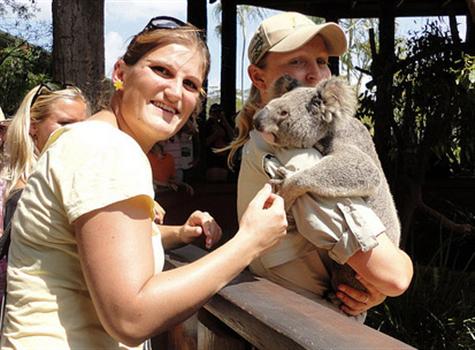
Koalas possess rounded ears. These rounded ears are vividly obvious when seen through the naked eyes by a normal individual. But most important things about these ears are that they are very heavily indulged with the fluffiness. Whoever touches Koalas' ears, will always feel a great degree of fluffiness being possessed by the koalas. Koalas also possess a very dark nose as well. It is not entirely black, but from the first sight an individual will always rate the noses of the koalas as being black. The nose of the koala is bigger and very dominant to the normal eyes. This nose according to some observers is like a small cut trunk of the elephant and according to some other observers the nose of the koala resembles like a spoon.
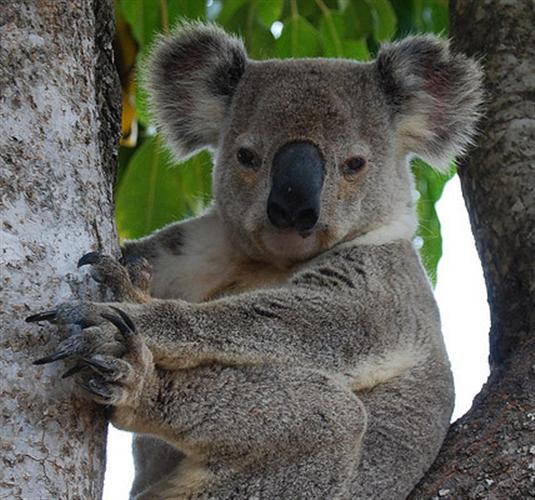
Koalas do vary in terms of their shapes and sizes. Some Koalas are smaller by their genetics, while the other koalas are genetically bigger. Usually the Koalas from Australia's Victorian territories are bigger as compared to the Koalas from Australia's Queensland territories. Moreover, male koalas are also bigger than the female Koalas. A male Koala from Victoria is around 16 Kilograms as compared to the male Koala from Queensland which is around 10 Kilograms. A female Koala from Victoria is around 12 Kilograms, while a female Koala from Queensland is around 7 Kilograms. Therefore, from gender as well as territorial perspectives, Koalas do show a certain degree of variance in terms of their sizes as well.
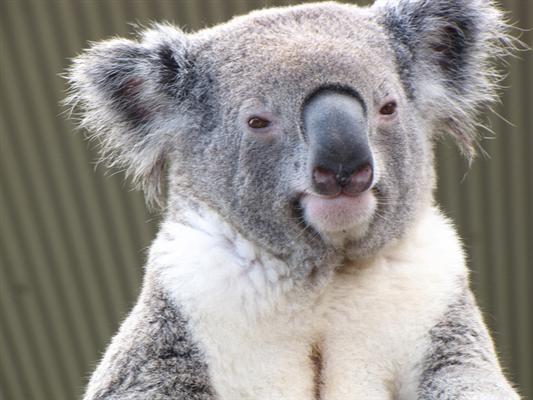
Another very attractive facial attribute of the Koalas is their pair of eyes. These eyes are dark brown in color, but they specifically resemble just like the marble balls. Our observation also rated the eyes of the koalas as button-shaped as well. Therefore, if an individual quickly wants to identify a Koala it will simply identify it with the rounded yet fluffy ears, dominant dark nose like a small trunk or spoon-shaped and also marble ball like eyes. Another very important accolade that can be specifically rewarded to the Koalas is that they are specifically considered as the largest tree climbing mammals across the continent of Australia as well. Therefore, when we are talking about Koalas we are also talking about the largest arboreal that is present across Australia within its natural habitat.
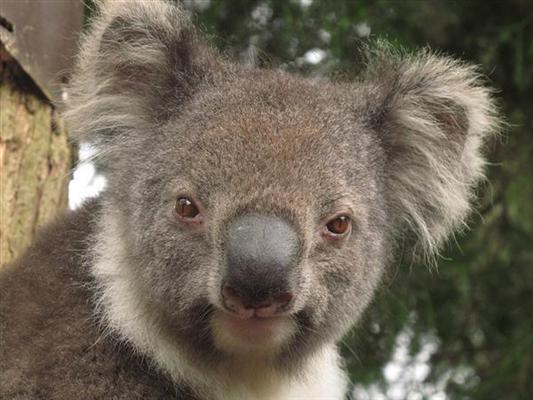
A core attribute which the Koalas uniquely possess especially the male Koalas is their sound. Male Koalas have a roaring sound, which could be heard from miles away. Male Koalas are also considered as the loudest of the mammals across the Australian continent. This also gives a clue to the territorial nature of the male Koalas. Koalas' population was normal for millions of years, however, around the 20th century, their population shoot-up, but sadly they were hunted for their fur at the similar amount of numbers. Today the koalas are specifically considered as endangered species as well.
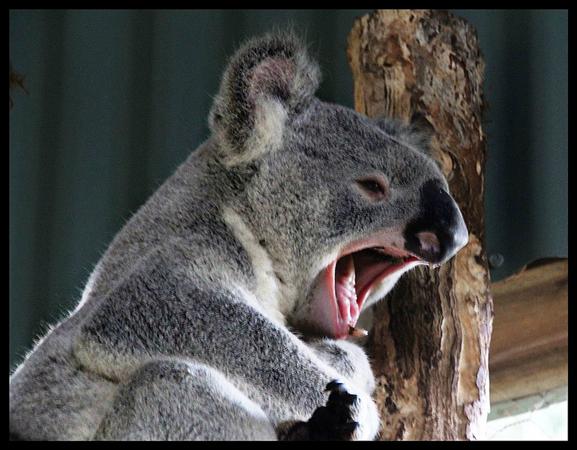
Koalas' social life is primarily referred as in a great degree of distress throughout their lives. Koalas have limited selection of food to choose. Koalas are prone to the tooth decay once they reach their maturity. And most important, koalas are defenseless mammals, and they become victims to a simplest of predator that is present at the continent of Australia. In fact tooth decay is one of the biggest problems for the Koala. Koalas have a very abrasive diet which includes eucalyptus leaves. They have to grind these leaves on the regular basis. This grinding along with the eucalyptus leaves' harmful affects triggers the process of tooth decay just after their life maturity.
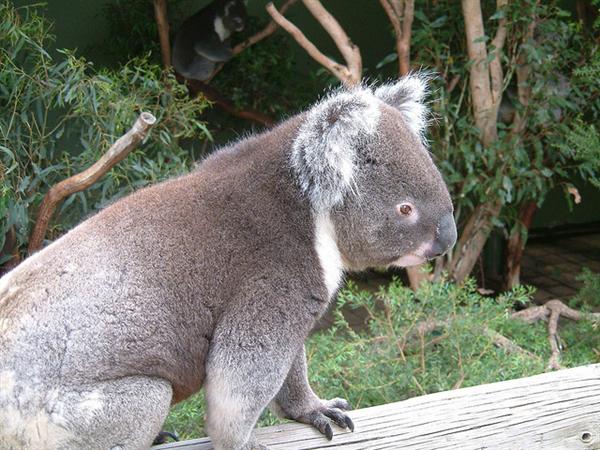
Moreover, the eucalyptus leaves are specifically considered as the only diet of the Koalas. A Koala throughout its life lives and gains growth through one kind of external food and that includes Eucalyptus leaves. These eucalyptus leaves are full of cyanide poisons. These kinds of Cyanide poisons if an normal herbivore will eat in large quantities, it will fail to survive in the wild. However, Koalas eat this throughout their lives and live normally through this diet. In fact they extract all the basic nutritional elements that are present within the Eucalyptus leaves.
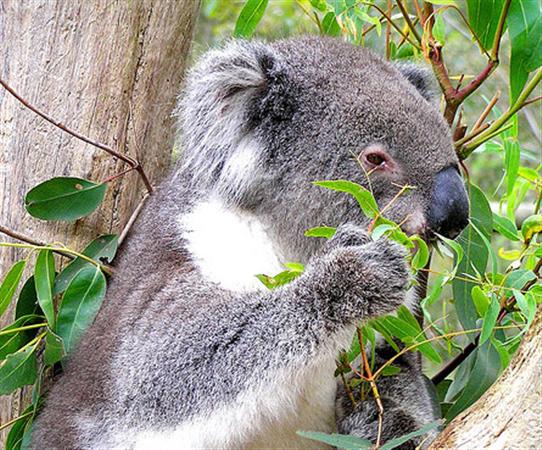
Eucalyptus leaves have very rare levels of nutrition in them, therefore, nutritional availability for the koalas is also very limited indeed. There are elements of proteins, Sugars, Carbohydrates present within the Eucalyptus leaves, and koalas have to absorb them through their stomach and through their large intestine. Only the well-chewed food is good enough for the Koalas to extract the maximum numbers of nutritional values from the eucalyptus leaves. Otherwise, a non-chewed food will fail to help Koalas to extract any kind of nutrition from the Eucalyptus leaves. As a result of the nutritional limitation within Eucalyptus leaves, it is also very natural for the Koalas to maintain lower energy levels as compared to many other mammals, who have high energy levels and are relatively fresh.
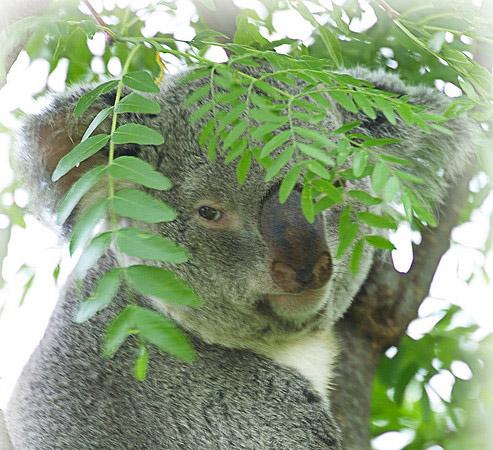
However, it is very rare to spot a koala on other kinds of trees and feeding on their leaves. Koalas have been rarely spotted on the leaves of Acacia, Banksia, Melaleuca and Hakea. These are some of the other trees on which koalas have been spotted and were specifically witnessed to be fed on the leaves of these trees. However, the only natural diet which the Koalas prefer was always the eucalyptus leaves. Eucalyptus leaves are also specifically comprised of the cyanide compounds as well. However, Koalas stomach is strong enough to ignore and resist any harmful effects of the cyanide compounds and process the whole leaves as a part of a normal system of digestion of their bodies.
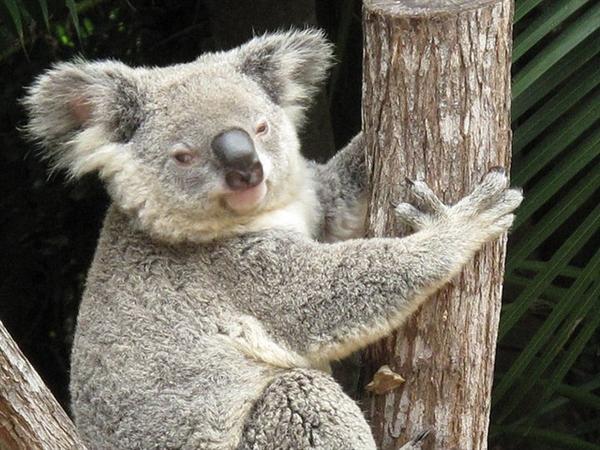
Eucalyptus leaves are also popular because of their ability to extract larger amount of water contents. This also means that the leaves of the Eucalyptus trees carry a lot of water contents as well. Usually these leaves possess 65% of water contents. Since Koalas consume these leaves, therefore, all the water requirements of the Koalas are specifically fulfilled by eating the eucalyptus leaves which carry enough water contents within themselves, that the Koala do not have to seek any water source from its surroundings.
It is also believed that Koalas do possess a highly advanced Digestive System. Koalas' stomach has a great potential to differentiate harmful poisons and healthy nutrition within the Eucalyptus leaves. Moreover, even the large intestine of the koalas has a very specific mechanism that also extracts useful nutrition from the eucalyptus leaves as well. But all of this specialized mechanism still offers limited amount of nutrition and caloric energies for the Koalas. Therefore, the next best option for the Koalas is not to lose any of their existing energy.
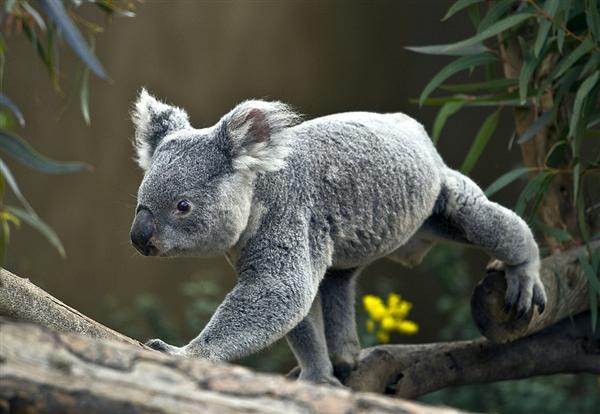
In order to conserve and maintain their energy levels the koalas have to rest more, and for very sure, Koalas sleep about 20 hours a day and even sometimes more. More and more sleeping for the koalas means that they will not waste any additional energy and calories on any unnecessary acts. Furthermore they will also significantly maintain their energy levels within their bodies through more sleeping. Therefore, 20 hours a sleep is a healthy genuine need for the koalas. But sleeping for 20 hours, is not the ultimate solution, because there are many other animals whose lifestyle is just like 20 hours sleep per day e.g., lions, tigers, etc.
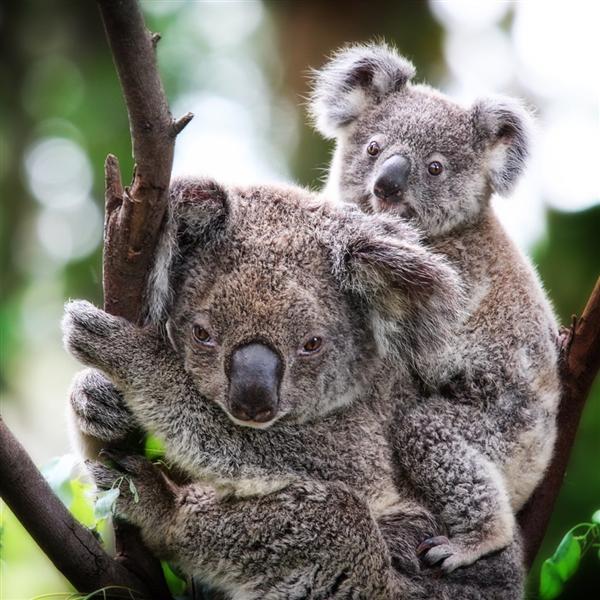
Apart from 20 hours sleep per day, Koalas also possess a very slow metabolism. Slower metabolism will mean that more food nutrition will stay in their body. The food will be decomposed in a slower manner, and Koalas will be able to resist the starvation period, when the food is not available to the koalas. Therefore, koalas also do possess a relatively lower metabolic rate as compared to many other mammals, and this lower metabolism specifically helps the koalas to maintain their energy levels and rely on the existing food for a longer period of time that is already in their bellies.
However, slower metabolism does not mean that koalas will eventually resist all kinds of starvation periods. Whenever, the Koalas tooth decay process peaks (means total tooth decay), it is this time, that Koalas are no longer able to chew the food. Lack of chewing means, that Koalas will have to eat non-chewed leaves which is a painful process. But the non-chewed leaves, does not help the koalas to extract any energy levels and nutritional values. Consequently Koalas die of starvation. It is also noted that the younger koalas are far better chewers as compared to the mature koalas and the elderly koalas.
Lack of Eucalyptus leaves can also allow the koalas to suffer from dehydration as well. The core reason can be specifically evaluated by the fact that Australia is the driest continent on earth. There are not enough water resources, and the rain falling level is also very lower. Koalas only fulfill their water needs through eucalyptus leaves. When these leaves are not available, there are less chances of koalas to maintain their water levels, and as a result of that the Koalas suffer from dehydration. Since the weather is very severe, heat strokes because of the higher temperatures are also very common among the koalas. Therefore, any direct exposure of the koalas towards the sun during the summers may directly endanger the koalas to suffer from the heat strokes as well.
Another core reason, which understandably helps to conserve the energy of Koala, is the size of Koalas' brain. The brain of the Koala is unusually smaller, which helps the Koalas to conserve their energy. Remember the brain rain is the biggest organ in the body and it extracts maximum amount of energy levels. Therefore, the smaller the brain, the more body energy is preserved and conserved for the Koalas in general. However, smaller brain also means that Koalas are relatively dumb as well. Koalas lack intellect at a certain level but good enough to make sure its survival in the wild. It also means that Koalas are not strategists but do know only their basics and live on it throughout their lives.
Despite the shorter brain, the most powerful and the necessary weapon which Koalas possess is their sense of smell. Because of this sense of smell, Koalas can significantly make a big impact on their food selection. Good sense of smell helps the Koalas to gain access to the fresh leaves of the Eucalyptus trees. Moreover, it is their this sense of smell which always helps the Koalas to differentiate which Eucalyptus leaves they should prefer during the summers and which ones during the winter. During the summer seasons the Koalas' prefer those Eucalyptus leaves that comprise of greater water contents, while in winter it selects such leaves which comprise of reasonable water levels.
The sense of smell of the Koalas helps them to distinguish the nitrogen levels within the leaves. Nitrogen levels are always one of the key indicators for determining the fresh leaves from the non-fresh leaves and Koalas always prefer fresh leaves to consume. In order to ensure the supply of the fresh leaves, the Koalas prefer the top of the tree. This is where the fresh leaves are always in abundance and they determine it naturally with the help of their sense of smell. Moreover, Koalas always prefer to live in those areas which have good & fertile soil and plantation rather than barren lands where the Eucalyptus leaves will be too much limited.
But the question still remains, how much Eucalyptus leaves the Koalas will have to consume during one specific day? The food consumption of the Koalas specifically depends upon their areas, sizes and the weather conditions as well. However, the average statistics do indicate that Koalas consume around 600 to 800 grams of Eucalyptus leaves. Bigger Koalas from Australia's Victorian territory consume more than 1 Kilogram of food within one specific day. Lactating female Koalas have to consume more and more food, in order to fulfill their nutritional body requirements but also to provide milk to their young ones as well.
It is also believe that during the winter season, koalas usually have to consume more food during the winter season as compared to the summer season. The reason being during the winter season, Koalas have to resist the winter frost and maintain their body temperatures. Otherwise during the summer season the only urge for the Koalas to eat more will be to fulfill their water requirements within their bodies, which the Eucalyptus leaves always fulfill for the koalas. Therefore, during the winter, it is the matter of fighting the cold, while during the summers; it is always the matter of fighting the water urge being specifically triggered for the koalas.
A baby Koala is called Joey. Babies of many other marsupials such as Kangaroos and wallabies are also called Joeys as well. In fact the babies of all the marsupials are primarily termed as Joeys for their specific identification. The same is true about the Koalas as well, since they belong to the marsupial family, therefore, their babies are naturally termed as Joeys. It takes about 34 to 36 days for a female Koala to produce a young Koala Joey after the period of the successful mating with male koalas. This period is also specifically termed as gestation period for the female koalas as well. Therefore, the gestation period for the female Koalas is around 34 to 36 days.
It is very normal for the female Koala to produce the baby Koala Joey once every 2nd year. However, if the food supply is good and eucalyptus leaves which is their diet is available with the maximum extent; female koalas are capable of breeding every year as well. The size of the baby Koala Joey is as little as the size of the bean seed. Normally the size of the baby Koala Joeys is around 19 millimeters, however, this size also varies as well and sometimes it is as big as 23 millimeters and as small as 15 millimeters as well.
It is also estimated that the size of the baby Koala Joeys at the time of their birth is less than 1 gram. This makes Koala Joeys as one of the lightest babies born by the mammals on the planet earth. In fact the size of the entire marsupial baby Joeys is always small and they also weigh less as well. But since Koalas are bigger in size at maturity, therefore, the smaller size of the Joeys always prompt surprising emotions from the readers as well as the listeners. A baby Koala Joey stays inside the pouch of its mother for about 10 to 12 months sometimes even more than 12 months as well. If the living conditions are not good, the female Koalas have to prolong their offspring reproduction once every 3rd year as well.
It is also specifically noted that the new born baby Koala Joeys have a well established sense of smell as well. They just very simply have to move from the cloacae directly to their mother's pouch. They travel this distance with the help of their sense of smell and end up inside the pouch, where they stick very closely to the tits of its mothers. Usually the smell of the milk prompts the baby koala joeys to initiate their movement towards the pouch of their mothers. They remain attached to one of the tit and start relying on the milk of their mother which is an ultimate nutritional source for the baby Koala Joeys.
After some months around 4 to 6, the first solid food which the baby Koala eats is called pap. Pap is basically not the normal excreted shit of the koalas but it is a chewed food that is excreted from the mother koala to be specifically eaten by the baby Koala Joey. It comprises of all the core nourishment and it is a first step for the baby Koala Joey to shift towards the Eucalyptus leaves on which the Koala Joey relies its entire life from the futuristic perspective as well. The mother milk for the Koala Joey initially offers it a lot of carbohydrates. Carbohydrates are always required for rapid energy creation. However, later on, these carbohydrates within the milk are replaced by the protein elements, which help the Koala Joeys to build strong muscular power.
During the early life of the young Koala Joey, it has no tooth at all. Tooth start to emerge within the mouth of the Koala Joeys around the age of 6 to 7 months and by the end of 1 year, they are good enough to chew the food e.g., Eucalyptus leaves. At the time of maturity Koala Joeys develop well-established tooth, which help them in chewing the food, until they start decaying during the later stages of their life and finally, no tooth are left on their mouth at the elderly days because of the tooth decaying problem through tooth grinding.
The mother koalas tend to stay with their Joeys for about 8 months to 9 months. After that they become very aggressive towards them, and finally they leave and abandon their Joeys once it forever. If the Joey tries to chase them and comes near them, this time they aggressively shrug them off, and realize them to start a life on their own. During the younger age (less than 9 months), if the Koala is separated from its mother, it starts making squeaking sounds and even screams as well. At this time the mother Koalas are very tolerant towards their babies, and care them to the maximum extent.
One of the most surprising facts that come from the Koalas' perspective includes the tolerance of the male Koalas with the young koala Joeys. If the young Koala Joeys accidentally move towards the mature male Koalas, the male koalas do not hurt them. Even male koalas are also spotted to hold them on their backs and playing with the young koala Joys as well. It is specifically noted that majority of the marsupial mammals are not playful, however, Koalas are an exception, because the baby koala joeys are highly playful with their mothers. They nibble their mothers' backs, claw them, and even create strange sounds as well, to invigorate their playing behavior.
Geographically, the koalas which live within the Brisbane areas of Australia enjoy abundance of food (e.g., Eucalyptus leaves. Moreover, there is more greenery within the area and dry lands are relatively rare. This is the core reason that the population of the Koalas within these areas is higher as well. Furthermore, the sizes of the koalas within these areas are also huge as well. On the other hand Koalas within Queensland enjoy scarce food resources and also sometimes face starvation and droughts as well. As a result of that, the koalas from Queensland are smaller in terms of their sizes and are also lesser in population as well. Moreover, the Koalas within Victorian areas are so much populated that their territories are always overlapping with one another, while the Koalas territories within Queensland are always bigger and they rarely overlap.
According to the findings of the researchers and common observations, the female koalas do have a potential to live longer than the male Koalas. Female Koalas live for about 16 years. However, on the other hand the male Koalas live about 12 years on average. However, some observations and records also suggested that female koalas to have lived as longer as 20 years as well within the captivity. Male Koalas have huge size; therefore, they have to eat more. More eating always mean more grinding which specifically contributes towards the tooth decaying process as well, unless they lose their entire tooth. However, females have to eat more during the breeding season and lactation periods as well, but their food consumption is always lesser than the male koalas.
Female Koalas can be fertile around the age of 10 years at maximum. However, the female koalas do start giving birth around the age of 18 months, but after the age of 10 years, females rarely give births because for Koalas accumulating the food for their young ones is always a hard earned process. Female Koalas do give birth once every 2 year normally. However, if the conditions are good in terms of food availability, the female koalas can be fertile every year as well. But this rarely happens because female koalas prefer some rest from births, for about 6 months or so before starting their mating once again.
In terms of Koalas social behavior, they are solitary animals. Koalas love to live alone rather than living in herds. Kangaroos on the other hand are also a marsupial mammal, but it lives in the herds and packs while Koalas on the other hand love to live a lonely life and they prefer a solitary lifestyle throughout their lives. However, captive koalas are forced to stay in groups within animal sanctuaries. During the captivity, the female koalas are also well known to share their babies as well. This is a core indicator of the mother Koalas as being highly tolerant indeed towards the babies of other koalas. During this sharing, they also feed baby koala joeys as well.
Koalas have couple of natural predators as well. In fact their biggest natural predator are the humans which are always attracted by their fur, but other predators of the koalas include Dingoes, Goannas, Owls, Eagles and Hawks etc. Medium-sized Goannas are capable of climbing trees as well; therefore, they are always a bigger threat to the sleeping koalas. Eagles are also a big threat towards the smaller sized koalas, while dingoes at the ground only ambush the nomadic koalas that search for the newer territories and become the victim of the dingoes.
Koalas have also very specialized kind of fur as well. This fur is developed in such a way that whenever, a rain falls over it, rather than absorbing water, it releases the water off the fur very quickly. This is specifically helpful for the Koalas during the winter seasons. Koalas also sleep with specific postures during the summers and winter seasons as well. During the summer season the Koalas sleep with their back facing towards the branch of the tree and belly upwards while during the winter they sleep inverted with their belly facing the tree branches. These sleeping postures are always preferred by the Koalas to keep up the energy level and not to waste energy in any unnecessary activity.
Koalas also possess alpha males as well. But unlike many other animals, this alpha male from the Koalas' family do not enjoy any specific benefits such as mating and controlling as many females as well. Other male koalas equally get a good chance of mating with the females and pass on their genes to the next generation. Alpha male has its hold on the territory; however, such an alpha male koala is not aggressive as other mammals. Even if there is a territorial conflict, the fight is very brief but decisive and there is relatively less violence as both the koalas can't afford to spend too much energy on fighting and getting wounds to be recovered from. Usually the bigger size koala maintains its dominance over the smaller koala, which runs away into another tree.
A very important question regarding the food consumption of the Koalas is the time at which the Koalas prefer to eat. Observations have suggested that Koalas always prefer to eat during the early dawn period and during the post dusk period. Else apart from this, they always prefer to sleep about 20 hours a day. Their eating is brief but they eat very quickly during this time. Moreover, during this time period there are always a lesser chances of the aerial predators such as falcons and Eagles.
Liger Articles
Marsupials vs. Placental Mammals
Koalas are most popular animals in Australia
Koalas are more popular as compared to Kangaroos
Koalas and their Dominant Nose
Button Shaped Fascinating Eyes of the Koalas
Core Recognizing Features of Koalas
Koalas are the largest tree climbing Mammals in Australia - Koalas as Arboreal
Sizes of Koalas from Queensland, Australia
Sizes of Koalas from Australia's Victorian Origin
Difference between Queensland and Victorian Koalas
Average Weights of Male Koalas
Weighing Male vs Female Koalas
Male Koalas have Loudest of voice among all Australian Mammals
Origin of Koalas & their Evolution
Koalas Population Increased at the end of 20th century
Historical Evolution of the Koalas - A Physical Perspective
Koalas and their Aboriginal and Native Names
It Took 10 years for Aboriginal Australians to Spot and Recognize Koalas
Koalas Live Hardest and Toughest Lives Among all animals
Koalas Tooth Decay through its Abrasive Diet
Koalas Diet is Fully Poisonous and Toxic
Koalas' Food Eucalyptus has Lower Nutrition
Koalas have Lower Energy Levels
Koalas - When Occasionally Spotted on other Leaves for their Food
Why Koalas drink little or no Water?
Koalas & their Advanced Digestive Mechanisms
Why Koalas Sleep more than 20 Hours a Day?
Koalas Lack Energy and Strength
Koala's Tooth from Growth till Tooth Decay
Young Koalas are Better Chewers as Compared to Mature and Elderly Koalas
Why Most Koalas Die of Starvation?
Heat Exhaustion and Heat Strokes among Koalas
Do Koalas lack Intellectual Abilities?
Koalas and their Sense of Smell
Koalas Love Fresh Eucalyptus Leaves as their Food
Koalas' Eucalyptus Leaves' Preferences during summers and Winters
Koalas' Preference for Leaves Having Higher Nitrogen Levels
Koalas Prefer Big Eucalyptus Trees and Love to Stay at Trees' tops.
Koalas Prefer to Live in Areas that have Good Soil and Fertile Lands
Koalas' Per Day Food Consumption
Koalas Food Consumption Depends upon their Body Size
Lactating Female Koalas Consume More Food as Compared to the Normal Female Koalas
Koalas Consume More Food during Winters as Compared to Summers
Female Koalas are very Selective Regarding their Leaf Selection and Food Consumption.
A Baby Koala Joey Lives in her Mother's Pouch for 8 to 9 Months
Gestation Period within Female Koalas
Breeding Behaviors of the Female Koalas
The Size of the Baby Koala Joey at the time of its Birth
Weight of the Baby Koala Joey at the Time of its Birth
At Birth the Baby Koala Joey Travels from Cloaca into their Mother's Pouch
Newborn Koala Joeys have Well-Established Sense of Smell
Koala Joey keeps his Head Inside its Mother's Pouch for 6 Months
Complete Shape and Body Development of the Koala Joey
Pap - The first solid food of the Koala Joeys
When Does Tooth Emerge for Baby Koala Joey?
Aggressive Behavior of Mother Koalas towards their Joeys
Queensland Offers Less Nutritional Values for Koalas
How long does Koalas live? Age of the Koala
Female Koalas Live More than Male Koalas
What is the Average Age of the Male Koala?
Average Ages of the Female Koalas
For How Long a Female Koala can Give Birth to the Koala Joeys?
How many times female Koalas give birth?
Koalas and Australia's Bushfire
Koalas' fur quickly gets rid of rain water
Koalas Resting and Sleeping Postures and Positions during the Hot Summer Seasons
Winter Season and Sleeping Postures of Koalas
Koalas' Urination during Summer and Winter Seasons
Koalas and their Specialized Claws
How does a Koala regulate its Body Temperature?
Food Consumption and Feeding Timings of the Koalas
Koalas Always Prefer Eucalyptus Leaves from the Tree top
How does a Koala Grooms itself?
Koalas' Territories and ranges within Australia's Victorian Areas
Koalas' Territories and Ranges within Australia's Queensland Areas
Behavior of the Alpha Dominant Male Koala
Aggressiveness of Female Koalas
Scent Marking Behavior of the Male Koalas
Mating Strategy of the Male Koalas
Fights and Territorial Encounters of Male Koalas
Sounds and Vocalizations of Male Koalas
Sounds and Vocalization of the Female Koalas
Koalas and their Facial Expressions
Breeding Ages of the Male and Female Koalas
Factors Influencing the Success of Koalas' Fertility Rates
Behavior of the young and adolescent Koala Joey
When Does a Mother Koala Says Goodbye and Leaves the Young Koala Joey?
Playful Behavior of the Young Koala Joeys
Koalas - Mating Season and Mating Months
Koala Informationen, Bilder, Neuigkeit, und Erforschung
Коала - сумчатый млекопитающий